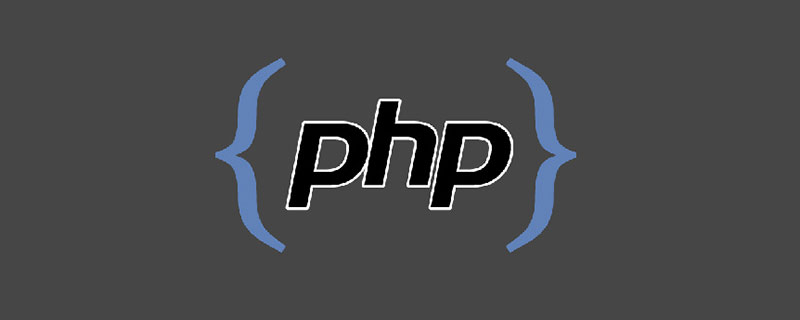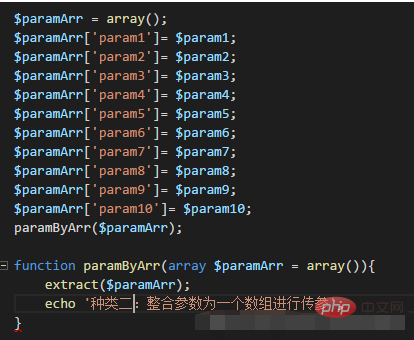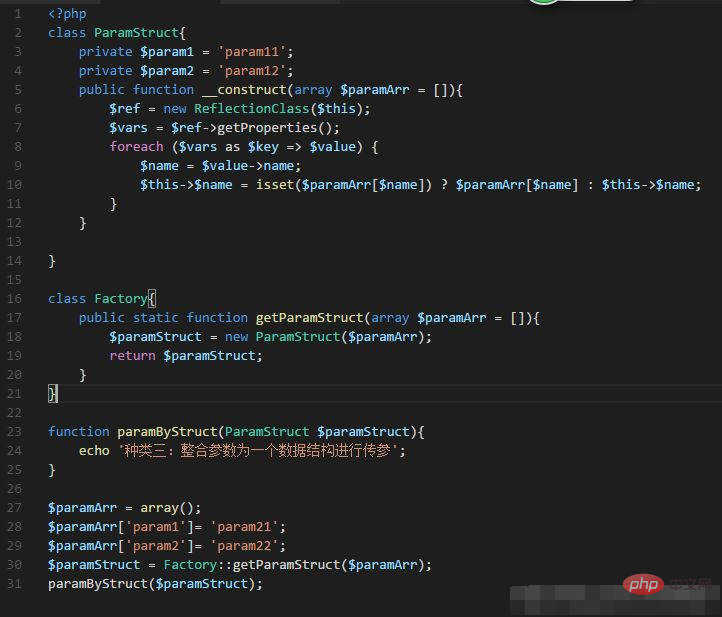
The methods of passing parameters in php are: 1. The caller directly passes the parameters without processing the parameters; 2. Combine the parameters into an array and pass the entire array as a parameter; 3. Pass A data structure object is used as a parameter.

The methods of passing parameters in php are:
The first one
Pass parameters directly, line up each parameter and write it down one by one, for example:

Advantages:
Pass The incoming parameters are clear, and you can clearly know how many incoming parameters there are and what they mean. The semantics are clear at a glance.
Convenient to call, the caller directly passes the parameters without processing the parameters.
More friendly and easier for novices to understand.
Disadvantages:
With too many formal parameters, the code loses its beauty and is too casual.
When a certain parameter needs to be changed, it affects the whole body. For example, $param5 is changed to an optional parameter, and the default value is test:

The disadvantage is obvious. At this time, due to the order of PHP parameters, the optional parameters must be at the end, so all callers need to at least remove the original param5 and put At the last position of the parameter, changes are expensive.
Summary: When there are few parameters, you can pass parameters directly one by one, which is the best. However, when there are too many parameters or the need for changes is large, this method is undoubtedly onerous.
So for the above, when there are too many parameters, you can use method two:
The second one
combine the parameters into In the form of an array, the entire array is passed as a parameter. For example:

Advantages:
The code is cleaner.
The code is more flexible. Now even if a parameter needs to be changed, there is no need to modify the parameters of the function. You only need to add parameters to the caller.
Disadvantages:
No grammatical restrictions of PHP. For example, there are no type restrictions such as string, and there are no syntax restrictions on optional parameters with default values. This requires you to do one more layer of parameter checking.
The parameters are less readable. Which parameters in the function array cannot be seen through the formal parameters. You need to check the caller's array composition.
Summary: Generally speaking, this method can solve the disadvantages of the first parameter transmission method, but it also brings greater disadvantages. Parameter restrictions require an additional layer. It can be said that it is a relatively low cost-effective method to deal with hooks.
Based on the advantages and disadvantages of the above two methods, I summarized the third way to pass parameters:
The third way
Pass a data structure object As a parameter, for example:

Advantages:
The parameter is a data structure to ensure the integrity of the data. That is, the data structure passed in must contain the required parameters.
When the parameters need to be increased or decreased, you only need to modify the object properties of the data structure model.
The control and restriction of data can be unified at the model layer for processing.
Disadvantages:
May require multiple data structure models.
Summary: Generally speaking, this method can comprehensively solve the disadvantages of the first and second methods, which is that it requires the establishment of multiple data structure models and increases the amount of code.
Related learning recommendations: PHP programming from entry to proficiency
The above is the detailed content of What are the methods of passing parameters in php?. For more information, please follow other related articles on the PHP Chinese website!